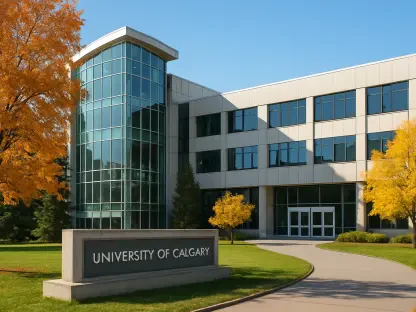The increasing trend of private school choice programs, such as Education Savings Accounts (ESAs) and vouchers, has sparked considerable debate about their financial implications for public schools. These initiatives, while aimed at expanding educational opportunities and promoting parental control, have introduced a host of challenges for public school districts. This article delves deeply into the multifaceted impact of these programs on public school budgets, particularly examining the situation in Iowa City and other districts across various states.
Enrollment Impact and Financial Uncertainty
Introduction of ESAs in Iowa City
In Iowa City, the introduction of ESAs marked a significant shift. Historically, the district had enjoyed a stable or growing student enrollment rate. However, the state’s decision to implement the ESA program, which allocates $7,800 per student for private education expenses, disrupted this trend. Suddenly, the district witnessed an unexpected decline in enrollment.
The ESA program allowed families to redirect public funds toward private education, fundamentally altering the financial landscape of the district. When 470 students opted for ESAs, with over 135 being new departures from public schools, the financial projections of the district were severely impacted. Each departing student represented a tangible financial loss for the district.
Effect on Enrollment Numbers
While the percentage of students leaving may appear minor, the financial repercussions were substantial. The Iowa City school district faced a loss equivalent to the salaries of approximately 11 full-time teaching positions. This was largely due to Iowa’s funding formula, which directly correlates financial support with student enrollment numbers and imposes strict caps on spending.
The sudden enrollment decline not only affected staffing but also created a ripple effect, leading to reduced resources, larger class sizes, and potential program cuts. The once-predictable growth trend was replaced with financial instability and uncertainty.
Broader Financial Impacts on Districts
Complications in Budget Projections
The unpredictability introduced by ESAs and similar programs further compounds the budgeting dilemma. Districts find it increasingly challenging to make accurate future projections, as the number of students opting for these programs could vary significantly year to year. This lack of predictability makes long-term financial planning exceedingly difficult.
In states like Indiana and Florida, the cumulative impact of lost funding from similar programs manifests as millions of dollars in deficits. This financial instability is especially pronounced in districts with numerous private schooling options, exacerbating the struggle to balance budgets.
Strategies and Adjustments
To combat these deficits, some districts have resorted to raising local taxes. However, this option is not universally available. For instance, Iowa City’s state-imposed spending caps limit their ability to generate additional revenue. Consequently, these districts must make tough decisions, such as reducing staff, delaying necessary expenditures, and increasing employee contributions to benefits.
These strategies, while necessary for immediate relief, can have long-term detrimental effects on the quality of education and staff morale. The financial strain forces districts to compromise on essential services and investments that are crucial for maintaining educational standards.
State-Level Budgetary Squeeze
State Expenditure on Choice Programs
At the state level, the financial burden of extensive private school choice programs is becoming increasingly evident. States like Arizona, Florida, and Ohio are dedicating significant portions of their budgets to fund these initiatives. For instance, North Carolina’s voucher system has led to substantial cuts in public school aid, reflecting the growing financial strain.
As states allocate more funds to private school choice, public schools face potential budget cuts, risking the financial health of the entire public education system. The reallocation of funds prompts a critical evaluation of the sustainability of long-term educational financing.
Future Budget Cuts
With increasing state investment in private school choice, public schools might experience further financial reallocation. This scenario poses a significant risk, as it may force public schools to operate with even fewer resources. The evolving financial landscape requires meticulous planning and reevaluation to prevent detrimental impacts on the public education system.
Challenges of Transparency and Accountability
Issues of Accountability
A recurring issue in the implementation of private school choice programs is the lack of transparency. District administrators have called for greater clarity regarding how these programs are funded and their specific impact on local taxpayers. In some cases, such as in the Kickapoo district in Wisconsin, costs are surreptitiously shifted to property taxpayers, leading to confusion and frustration.
The absence of clear financial breakdowns on bills complicates the ability of taxpayers to understand and evaluate the costs associated with these programs. Increased transparency is essential to ensure public trust and accountability.
Credit Ratings and Financial Health
The introduction of private school choice programs complicates the financial stability assessments conducted by credit rating agencies. The fluctuating enrollment numbers and resultant financial uncertainty make it challenging to gauge a district’s fiscal health accurately.
This financial unpredictability might necessitate increased spending by districts to retain students, further straining already tight budgets. The cycle of financial instability and reactive spending creates a precarious situation for public school administrators and policymakers.
Long-Term Projections and Planning
Challenges in Enrollment Forecasting
The rising popularity of private school choice programs, including Education Savings Accounts (ESAs) and vouchers, has ignited significant debate over their financial impact on public education. These programs are designed to broaden educational opportunities and enhance parental choice. However, they’ve also brought a range of complexities and challenges for public school districts.
One of the main points of contention is how these private school choice initiatives affect public school budgets. When students transfer from public to private schools using ESAs or vouchers, the funding that would have gone to the public schools follows the student to their new institution. Critics argue that this drains resources from already underfunded public schools, potentially leading to cutbacks in staff, programs, and services. Proponents, on the other hand, assert that competition will drive public schools to improve.
In Iowa City and many other districts across different states, the effects of these programs are already being felt. Budget reallocations are necessary when fewer students attend public schools, impacting financial planning and resource allocation. Public school administrators are grappling with how to maintain quality education with diminishing funds.
This article dives into the intricate impact these programs have on public school financing, exploring both the positive intentions behind private school choice and the inevitable fiscal challenges faced by public school districts.









